The Exploration of a Causal Mechanism for Corporate Environmental Performance in Hydropower Engineering Enterprises: Evidence from China and the United States
Abstract
1. Introduction
2. Theoretical Background and Literature Review
2.1. Research Status on Green Social Responsibility
2.2. Research Status on Green Social Responsibility of Hydropower Projects
2.3. Research Status on Causal Mechanism Theories and Methodologies
3. Materials and Methods
3.1. Event Causality Extraction
3.2. Content Analysis
3.3. System Dynamics Simulation
3.3.1. System Dynamics Fitness Analysis
3.3.2. System Boundary, Basic Hypothesis, and System Structure
4. Results
4.1. Causality Extraction Results
4.1.1. Causal Relationship Entity
4.1.2. Regulatory Scripts and Institutional Expectations
4.2. Content Analysis Results
4.2.1. Descriptive Analysis
4.2.2. Quantitative Research
4.3. Dynamical Simulation Results
4.3.1. Causal Relationship Diagram
4.3.2. System Dynamics Model
4.3.3. Model Verification and Simulation Scenario Design
Model Verification
Simulation Scenario Design
4.3.4. System Simulation Results
- (1)
- The cause-and-effect mechanism of green social responsibility in hydropower projects in both countries exhibited an overall positive trend across different dimensions and levels of comprehensive development;
- (2)
- Under the influence of endogenous motivation, the effects of hydropower projects in both countries were more pronounced in terms of ethics and governance, green development, and risk response. Moreover, the risk response had a more noticeable impact on enhancing ethics and governance as well as promoting green development, while green development exerted a stronger influence on enhancing the risk response;
- (3)
- Under the scenario of basic power driving, the driving effect of green development power factors on the fulfillment mechanism of green social responsibility in hydropower projects was the most significant, followed by the risk response-related factors and ethical and governance-related factors.
5. Discussion
5.1. Ethics and Governance Discussion
5.2. Green Development Discussion
5.3. Risk Response Discussion
6. Conclusions and Future Outlook
Author Contributions
Funding
Institutional Review Board Statement
Informed Consent Statement
Data Availability Statement
Conflicts of Interest
Appendix A
| import time from sentence_transformers import evaluation from sentence_transformers import SentenceTransformer, InputExample, losses from torch.utils.data import DataLoader import pandas as pd # Generate sentence pairs and correlation coefficients def generate_pairs_and_scores(data): num_rows = data.shape[0] slist1 = [] slist2 = [] scores = [] for i in range(num_rows): for j in range(i + 1, num_rows): slist1.append(data.iloc[i, 0]) slist2.append(data.iloc[j, 0]) if data.iloc[i, 1] == data.iloc[j, 1]: scores.append(0.8) else: scores.append(0.2) return slist1, slist2, scores # Generate fine-tuning input instances def create_input_examples(slist1, slist2, scores): input_examples = [] for s1, s2, score in zip(slist1, slist2, scores): # print(s1) # print(s2) example = InputExample(texts = [s1, s2], label = score) input_examples.append(example) return input_examples # Fine-tune the Chinese model def finetune_model(): val_data = pd.read_csv(filepath_or_buffer: ‘dataset/cn4/finetune_data/finetune_val/0_output.txt’, sep = ‘\s+’, header = None, names = [‘Sentence’, ‘Group’]) val_list1, val_list2, scores = generate_pairs_and_scores(val_data) evaluator = evaluation.EmbeddingSimilarityEvaluator(val_list1, val_list2, scores) # Input the pre-trained model and start fine-tuning model = SentenceTransformer(‘paraphrase-xlm-r-multilingual-v1’, device = ‘cpu’) # Suppose your data is saved in a file named ‘data.txt’ and is space-separated train_data = pd.read_csv(filepath_or_buffer:‘dataset/cn4/finetune_data/finetune_train/0_output.txt’, sep = ‘\s+’, header = None, names = [‘Sentence’, ‘Group’]) train_list1, train_list2, scores = generate_pairs_and_scores(train_data) #Create a list of InputExample instances train_examples = create_input_examples(train_list1, train_list2, scores) train_dataloader = DataLoader(train_examples, shuffle = True, batch_size = 16) train_loss = losses.CosineSimilarityLoss(model) model.fit(train_objectives = [(train_dataloader, train_loss)], epochs = 1, warmup_steps = 100, evaluator = evaluator, evaluation_steps = 500, output_path = ‘./output’, save_best_model = True) finetune_model cn() # Fine-tune the English model def finetune_model_en(): # Suppose the digital labels are located at the end of each line and there is only one space before them. pattern = r‘(.+?)\s(\d+)$’ # Use regular expression delimiters val_data = pd.read_csv(filepath_or_buffer:‘dataset/en3/train/finetune_val/0_output_en_val.txt’, sep = pattern, engine = ‘python’ header = None, names = [‘Sentence’, ‘Group’], usecols = [1, 2]) val_list1, val_list2, scores = generate_pairs_and_scores(val_data) # print(val_list1) # print(val_list2) # print(scores) evaluator = evaluation.EmbeddingSimilarityEvaluator(val_list1, val_list2, scores) # Input the pre-trained model and start fine-tuning model = SentenceTransformer(‘paraphrase-xlm-r-multilingual-v1’, device = ‘cpu’) # Suppose your data is saved in a file named ‘data.txt’ and is separated by spaces. train_data = pd.read_csv(filepath_or_buffer:‘dataset/en3/train/finetune_train/0_output_en_train.txt’, sep = pattern, engine = ‘python’, header = None, names = [‘Sentence’, ‘Group’], usecols = [1, 2]) train_list1, train_list2, scores = generate_pairs_and_scores(train_data) # print(train_list1) # print(train_list2) # print(scores) # time.sleep(100) # Create a list of InputExample instances train_examples = create_input_examples(train_list1, train_list2, scores) # print(train_examples) train_dataloader = DataLoader(train_examples, shuffle = False, batch_size = 16) train_loss = losses.CosineSimilarityLoss(model) model.fit(train_objectives = [(train_dataloader, train_loss)], epochs = 1, warmup_steps = 100, evaluator = evaluator, evaluation_steps = 500, output_path = ‘./finetune_output_en’, save_best_model = True) finetune_model_en() |
References
- Shiru, M.S.; Shahid, S.; Shiru, S.; Chung, E.S.; Alias, N.; Ahmed, K.; Dioha, E.C.; Sa’adi, Z.; Salman, S.; Noor, M.; et al. Challenges in water resources of Lagos mega city of Nigeria in the context of climate change. J. Water Clim. Change 2019, 11, 1067–1083. [Google Scholar] [CrossRef]
- Sarsour, A.; Nagabhatla, N. Options and Strategies for Planning Water and Climate Security in the Occupied Palestinian Territories. Water 2022, 14, 3418. [Google Scholar] [CrossRef]
- Goel, M. Solar rooftop in India: Policies, challenges and outlook. Green Energy Environ. 2016, 1, 129–137. [Google Scholar] [CrossRef]
- Liu, H.; Fan, L.B.; Shao, Z.X. Threshold effects of energy consumption, technological innovation, and supply chain management on enterprise performance in China’s manufacturing industry. J. Environ. Manag. 2021, 300, 113687. [Google Scholar] [CrossRef]
- Riti, J.S.; Shu, Y. Renewable energy, energy efficiency, and eco-friendly environment (R-E5) in Nigeria. Energy Sustain. Soc. 2016, 6, 13. [Google Scholar] [CrossRef]
- Lopez, G.; Pourjamal, Y.; Breyer, C. Paving the way towards a sustainable future or lagging behind? An ex-post analysis of the International Energy Agency’s World Energy Outlook. Renew. Sustain. Energy Rev. 2025, 212, 115371. [Google Scholar] [CrossRef]
- Liu, X.; Liu, J.; Liu, J.; Yang, Y. Multi-period optimal capacity expansion planning scheme of regional integrated energy systems considering multi-time scale uncertainty and generation low-carbon retrofit. Renew. Energy 2024, 231, 120920. [Google Scholar] [CrossRef]
- Scanlon, B.R.; Ikonnikova, S.; Yang, Q.; Reedy, R.C. Will Water Issues Constrain Oil and Gas Production in the United States? Environ. Sci. Technol. 2020, 54, 3510–3519. [Google Scholar] [CrossRef]
- Hu, J.; Wu, Y.T.; Irfan, M.; Hu, M.J. Has the ecological civilization pilot promoted the transformation of industrial structure in China? Ecol. Indic. 2023, 155, 111053. [Google Scholar] [CrossRef]
- Moore, E.A.; Babbitt, C.W.; Gaustad, G.; Moore, S.T. Portfolio Optimization of Nanomaterial Use in Clean Energy Technologies. Environ. Sci. Technol. 2018, 52, 4440–4448. [Google Scholar] [CrossRef]
- Gargallo, P.; Lample, L.; Miguel, J.; Salvador, M. Dynamic comparison of portfolio risk: Clean vs dirty energy. Financ. Res. Lett. 2022, 47, 102957. [Google Scholar] [CrossRef]
- Pan, C.J.; Abbas, J.; Alvarez-Otero, S.; Khan, H.; Cai, C. Interplay between corporate social responsibility and organizational green culture and their role in employees’ responsible behavior towards the environment and society. J. Clean. Prod. 2022, 366, 132878. [Google Scholar] [CrossRef]
- Murcia, M.J. Progressive and Rational CSR as Catalysts of New Product Introductions. J. Bus. Ethics 2021, 174, 613–627. [Google Scholar] [CrossRef]
- Zhai, M.Y.; Lin, Q.G.; Huang, G.H.; Zhu, L.; An, K.; Li, G.C.; Huang, Y.F. Adaptation of Cascade Hydropower Station Scheduling on A Headwater Stream of the Yangtze River under Changing Climate Conditions. Water 2017, 9, 293. [Google Scholar] [CrossRef]
- Qin, P.C.; Xu, H.M.; Liu, M.; Du, L.M.; Xiao, C.; Liu, L.L.; Tarroja, B. Climate change impacts on Three Gorges reservoir impoundment and hydropower generation. J. Hydrol. 2020, 580, 123922. [Google Scholar] [CrossRef]
- Hediger, W. The Corporate Social Responsibility of Hydropower Companies in Alpine Regions-Theory and Policy Recommendations. Sustainability 2018, 10, 3594. [Google Scholar] [CrossRef]
- Javeed, S.A.; Latief, R.; Cai, X.; San Ong, T. Digital finance and corporate green investment: A perspective from institutional investors and environmental regulations. J. Clean. Prod. 2024, 446, 141367. [Google Scholar] [CrossRef]
- Geist, J. Editorial: Green or red: Challenges for fish and freshwater biodiversity conservation related to hydropower. Aquat. Conserv. Mar. Freshw. Ecosyst. 2021, 31, 1551–1558. [Google Scholar] [CrossRef]
- Hermoso, V. Freshwater ecosystems could become the biggest losers of the Paris Agreement. Glob. Chang. Biol. 2017, 23, 3433–3436. [Google Scholar] [CrossRef]
- Wang, Y.; Shi, Y.H.; Xu, X.F.; Zhu, Y.J. A Study on the Efficiency of Green Technology Innovation in Listed Chinese Water Environment Treatment Companies. Water 2024, 16, 510. [Google Scholar] [CrossRef]
- Jiang, L.S.; Zhou, W.; Wu, H.L.; Deng, W. Impact of business environment uncertainty on ESG performance from the perspective of resource supply and demand based on ESG performance. Econ. Anal. Policy 2025, 85, 1012–1030. [Google Scholar] [CrossRef]
- Lu, X.; Xu, F.C. Empirical Research on EPR Practices Performance and Governance Mechanism from the Perspective of Green Supply Chain. Sustainability 2018, 10, 4374. [Google Scholar] [CrossRef]
- Sun, Y.L.; Zhu, L.Y.; Hu, D. Fire testing real gold: Political following and shareholder-oriented ESG. Environ. Dev. Sustain. 2024, 1–46. [Google Scholar] [CrossRef]
- Zhang, Z.; Wang, Q.J.; Lu, B.B. How can social responsibility enhance the green value of financial enterprises? Empirical research based on the qualitative comparative analysis method. Front. Environ. Sci. 2022, 10, 1005768. [Google Scholar] [CrossRef]
- Liu, T.T.; Zhou, B. Green Finance Policy and Enterprise Total Factor Productivity: The Role of Corporate Environmental Social Responsibility and Financing Constraints. J. Clean. Prod. 2025, 493, 144953. [Google Scholar] [CrossRef]
- Le, T.T.; Tran, P.Q.; Lam, N.P.; Tra, M.N.L.; Uyen, P.H.P. Corporate social responsibility, green innovation, environment strategy and corporate sustainable development. Oper. Manag. Res. 2024, 17, 114–134. [Google Scholar] [CrossRef]
- Hameed, R.; Mahmood, A.; Shoaib, M. The Role of Green Human Resource Practices in Fostering Green Corporate Social Responsibility. Front. Psychol. 2022, 13, 792343. [Google Scholar] [CrossRef]
- Acheampong, A.O.; Opoku, E.E.O. Environmental degradation and economic growth: Investigating linkages and potential pathways. Energy Econ. 2023, 123, 106734. [Google Scholar] [CrossRef]
- Sidhoum, A.A.; Serra, T. Corporate Sustainable Development. Revisiting the Relationship between Corporate Social Responsibility Dimensions. Sustain. Dev. 2018, 26, 365–378. [Google Scholar] [CrossRef]
- Guo, W.F.; Zhou, J.; Yu, C.L.; Tsai, S.B.; Xue, Y.Z.; Chen, Q.; Guo, J.J.; Huang, P.Y.; Wu, C.H. Evaluating the green corporate social responsibility of manufacturing corporations from a green industry law perspective. Int. J. Prod. Res. 2014, 53, 665–674. [Google Scholar] [CrossRef]
- Li, M. Green governance and corporate social responsibility: The role of big data analytics. Sustain. Dev. 2023, 31, 773–783. [Google Scholar] [CrossRef]
- Xing, K.; Wong, W.K.; Chen, S.; Muda, I.; Ismail, S.M.; Akhtar, M. Green innovation imperative for natural resource-driven sustainable economic recovery: Linking rights Structure, corporate social responsibility, and renewable energy contracts. Heliyon 2024, 10, e36939. [Google Scholar] [CrossRef]
- Li, D.D.; Wang, L.F.S. Does environmental corporate social responsibility (ECSR) promote green product and process innovation? Manag. Decis. Econ. 2022, 43, 1439–1447. [Google Scholar] [CrossRef]
- Malik, S.Y.; Mughal, Y.H.; Azam, T.; Cao, Y.K.; Wan, Z.F.; Zhu, H.G.; Thurasamy, R. Corporate Social Responsibility, Green Human Resources Management, and Sustainable Performance: Is Organizational Citizenship Behavior towards Environment the Missing Link? Sustainability 2021, 13, 1044. [Google Scholar] [CrossRef]
- Rehman, S.U.; Bresciani, S.; Yahiaoui, D.; Giacosa, E. Environmental sustainability orientation and corporate social responsibility influence on environmental performance of small and medium enterprises: The mediating effect of green capability. Corp. Soc. Responsib. Environ. Manag. 2022, 29, 1954–1967. [Google Scholar] [CrossRef]
- Fordham, A.E.; Robinson, G.M. Identifying the social values driving corporate social responsibility. Sustain. Sci. 2019, 14, 1409–1424. [Google Scholar] [CrossRef]
- Ellili, N.O.D.; Kuzey, C.; Uyar, A.; Karaman, A.S. Moderating role of internal factors in corporate social responsibility reporting persistence and corporate market value. Corp. Soc. Responsib. Environ. Manag. 2024, 31, 2878–2899. [Google Scholar] [CrossRef]
- Basheer, M.F.; Hassan, S.G.; Ali, A.; Sabir, S.A.; Waemustafa, W. The influence of renewable energy, humanistic culture, and green knowledge on corporate social responsibility and corporate environmental performance. Clean Technol. Environ. Policy 2024. [Google Scholar] [CrossRef]
- Zhang, K.; Lian, X.B.; Wang, L.F.S. Green finance, loan commitment, and environmental corporate social responsibility in a differentiated duopoly. Manag. Decis. Econ. 2024, 45, 394–413. [Google Scholar] [CrossRef]
- Ho, J.W.; Huang, Y.S.; Hsu, C.L. Pricing under internal and external competition for remanufacturing firms with green consumers. J. Clean. Prod. 2018, 202, 150–159. [Google Scholar] [CrossRef]
- Yang, M.H.; Chen, H.; Long, R.Y.; Yang, J.H. How does government regulation shape residents? green consumption behavior? A multi-agent simulation considering environmental values and social interaction. J. Environ. Manag. 2023, 331, 117231. [Google Scholar] [CrossRef]
- Helfaya, A.; Kotb, A.; Hanafi, R. Qur’anic Ethics for Environmental Responsibility: Implications for Business Practice. J. Bus. Ethics 2018, 150, 1105–1128. [Google Scholar] [CrossRef]
- Uzhegova, M.; Torkkeli, L. Business responsibility and effectuation in internationalized SMEs. Int. Entrep. Manag. J. 2022, 19, 47–69. [Google Scholar] [CrossRef]
- Nejati, M.; Amran, A.; Hazlina Ahmad, N.H. Examining stakeholders’ influence on environmental responsibility of micro, small and medium-sized enterprises and its outcomes. Manag. Decis. 2014, 52, 2021–2043. [Google Scholar] [CrossRef]
- Dmytriyev, S.D.; Freeman, R.E.; Hörisch, J. The Relationship between Stakeholder Theory and Corporate Social Responsibility: Differences, Similarities, and Implications for Social Issues in Management. J. Manag. Stud. 2021, 58, 1441–1470. [Google Scholar] [CrossRef]
- Adamkaite, J.; Streimikiene, D.; Rudzioniene, K. The impact of social responsibility on corporate financial performance in the energy sector: Evidence from Lithuania. Corp. Soc. Responsib. Environ. Manag. 2023, 30, 91–104. [Google Scholar] [CrossRef]
- Kuo, T.C.; Chen, H.M.; Meng, H.M. Do Corporate Social Responsibility Practices Improve Financial Performance? A Case Study of Airline Companies. J. Clean. Prod. 2021, 310, 127380. [Google Scholar] [CrossRef]
- Weber, O.; Saunders-Hogberg, G. Corporate social responsibility, water management, and financial performance in the food and beverage industry. Corp. Soc. Responsib. Environ. Manag. 2020, 27, 1937–1946. [Google Scholar] [CrossRef]
- Liu, J.; Yang, W.; Cong, L. The role of value co-creation in linking green purchase behavior and corporate social responsibility-An empirical analysis of the agri-food sector in China. J. Clean. Prod. 2022, 360, 132195. [Google Scholar] [CrossRef]
- D’Souza, C.; Ahmed, T.; Khashru, M.A.; Ahmed, R.; Ratten, V.; Jayaratne, M. The complexity of stakeholder pressures and their influence on social and environmental responsibilities. J. Clean. Prod. 2022, 358, 132038. [Google Scholar] [CrossRef]
- Hadj, T.B. Effects of corporate social responsibility towards stakeholders and environmental management on responsible innovation and competitiveness. J. Clean. Prod. 2020, 250, 119490. [Google Scholar] [CrossRef]
- Ko, Y.Y.; Chiu, Y.H. Empirical Study of Urban Development Evaluation Indicators Based on the Urban Metabolism Concept. Sustainability 2020, 12, 7129. [Google Scholar] [CrossRef]
- Aung, T.S.; Fischer, T.B.; Azlin, A.S. Social impacts of large-scale hydropower project in Myanmar: A social life cycle assessment of Shweli hydropower dam 1. Int. J. Life Cycle Assess. 2021, 26, 417–433. [Google Scholar] [CrossRef]
- Vig, S. Sustainable development through sustainable entrepreneurship and innovation: A single-case approach. Soc. Responsib. J. 2023, 19, 1196–1217. [Google Scholar] [CrossRef]
- Kouloukoui, D.; de Marcellis-Warin, N.; Gomes, S.M.D.; Warin, T. Mapping global conversations on twitter about environmental, social, and governance topics through natural language processing. J. Clean. Prod. 2023, 414, 137369. [Google Scholar] [CrossRef]
- Bux, H.; Zhang, Z.; Ali, A. Corporate social responsibility adoption for achieving economic, environmental, and social sustainability performance. Environ. Dev. Sustain. 2024. [Google Scholar] [CrossRef]
- Seif, R.; Salem, F.Z.; Allam, N.K. E-waste recycled materials as efficient catalysts for renewable energy technologies and better environmental sustainability. Environ. Dev. Sustain. 2023, 26, 5473–5508. [Google Scholar] [CrossRef]
- Vieira, D.R.; Calmon, J.L.; Coelho, F.Z. Life cycle assessment (LCA) applied to the manufacturing of common and ecological concrete: A review. Constr. Build. Mater. 2016, 124, 656–666. [Google Scholar] [CrossRef]
- Gallardo-Vazquez, D.; Valdez-Juarez, L.E.; Castuera-Diaz, A.M. Corporate Social Responsibility as an Antecedent of Innovation, Reputation, Performance, and Competitive Success: A Multiple Mediation Analysis. Sustainability 2019, 11, 5614. [Google Scholar] [CrossRef]
- Owusu-Sekyere, E.; Abdulai, A.; Jordaan, H.; Hansson, H. Heterogeneous demand for ecologically sustainable products on ensuring environmental sustainability in South Africa. Environ. Econ. Policy Stud. 2020, 22, 39–64. [Google Scholar] [CrossRef]
- Menguc, B.; Auh, S.; Ozanne, R. The Interactive Effect of Internal and External Factors on a Proactive Environmental Strategy and its Influence on a Firm’s Performance. J. Bus. Ethics 2010, 94, 279–298. [Google Scholar] [CrossRef]
- Wang, S.Y.; Suster, S.; Baldwin, T.; Verspoor, K. Predicting Publication of Clinical Trials Using Structured and Unstructured Data: Model Development and Validation Study. J. Med. Internet Res. 2022, 24, e38859. [Google Scholar] [CrossRef] [PubMed]
- Zhou, B.; Hua, B.; Gu, X.H.; Lu, Y.Q.; Peng, T.; Zheng, Y.; Shen, X.W.; Bao, J.S. An end-to-end tabular information-oriented causality event evolutionary knowledge graph for manufacturing documents. Adv. Eng. Inform. 2021, 50, 101441. [Google Scholar] [CrossRef]
- Gao, J.Q.; Yu, H.; Zhang, S. Joint event causality extraction using dual-channel enhanced neural network. Knowl.-Based Syst. 2022, 258, 109935. [Google Scholar] [CrossRef]
- Wei, X.; Huang, C.Y.; Zhu, N.J. Event causality extraction through external event knowledge learning and polyhedral word embedding. Mach. Learn. 2024, 113, 1–20. [Google Scholar] [CrossRef]
- Wu, L.T.; Lin, J.R.; Leng, S.; Li, J.L.; Hu, Z.Z. Rule-based information extraction for mechanical-electrical-plumbing-specific semantic web. Autom. Constr. 2022, 135, 104108. [Google Scholar] [CrossRef]
- Martens, H. Causality, machine learning and human insight. Anal. Chim. Acta 2023, 1277, 341585. [Google Scholar] [CrossRef]
- Xu, R.F.; Hu, J.N.; Lu, Q.; Wu, D.Y.; Gui, L. An ensemble approach for emotion cause detection with event extraction and multi-kernel SVMs. Tsinghua Sci. Technol. 2017, 22, 646–659. [Google Scholar] [CrossRef]
- Korzeniewska, A.; Mitsuhashi, T.; Wang, Y.J.; Asano, E.; Franaszczuk, P.J.; Crone, N.E. Significance of event related causality (ERC) in eloquent neural networks. Neural Netw. 2022, 149, 204–216. [Google Scholar] [CrossRef]
- Weimer, H.; Kshetrimayum, A.; Orús, R. Simulation methods for open quantum many-body systems. Rev. Mod. Phys. 2021, 93, 015008. [Google Scholar] [CrossRef]
- Lara, J.D.; Henriquez-Auba, R.; Ramasubramanian, D.; Dhople, S.; Callaway, D.S.; Sanders, S. Revisiting Power Systems Time-Domain Simulation Methods and Models. IEEE Trans. Power Syst. 2024, 39, 2421–2437. [Google Scholar] [CrossRef]
- Dube, N.; Selviaridis, K.; van Oorschot, K.E.; Jahre, M. Riding the waves of uncertainty: Towards strategic agility in medicine supply systems. J. Oper. Manag. 2024, 70, 1234–1260. [Google Scholar] [CrossRef]
- Kang, Y.J.; Noh, Y.; Lim, O.K. Integrated statistical modeling method: Part I—Statistical simulations for symmetric distributions. Struct. Multidiscip. Optim. 2019, 60, 1719–1740. [Google Scholar] [CrossRef]
- Chen, X.Q.; Yang, L.F.; Dong, W.; Yang, Q. Net-zero carbon emission oriented Bi-level optimal capacity planning of integrated energy system considering carbon capture and hydrogen facilities. Renew. Energy 2024, 237, 121624. [Google Scholar] [CrossRef]
- Han, X.; Liu, J.C.; Hu, X.Y.; Wang, W.; Wang, Q. Design of a Long-Acting Rivastigmine Transdermal Delivery System: Based on Computational Simulation. AAPS PharmSciTech 2022, 23, 54. [Google Scholar] [CrossRef] [PubMed]
- Wang, P.; Deng, Z.K.; Cui, R.L. TDJEE: A Document-Level Joint Model for Financial Event Extraction. Electronics 2021, 10, 824. [Google Scholar] [CrossRef]
- Chen, Z.; Ji, W.T.; Ding, L.L.; Song, B.Y. Fine-grained document-level financial event argument extraction approach. Eng. Appl. Artif. Intell. 2023, 121, 105943. [Google Scholar] [CrossRef]
- Yildirim-Karaman, S. Uncertainty in financial markets and business cycles. Econ. Model. 2018, 68, 329–339. [Google Scholar] [CrossRef]
- Rickett, L.; Datta, P. Beauty-contests in the age of financialization: Information activism and retail investor behavior. J. Inf. Technol. 2018, 33, 31–49. [Google Scholar] [CrossRef]
- Aman, M.; Abdulkadir, S.J.; Aziz, I.A.; Alhussian, H.; Ullah, I. KP-Rank: A semantic-based unsupervised approach for keyphrase extraction from text data. Multimed. Tools Appl. 2021, 80, 12469–12506. [Google Scholar] [CrossRef]
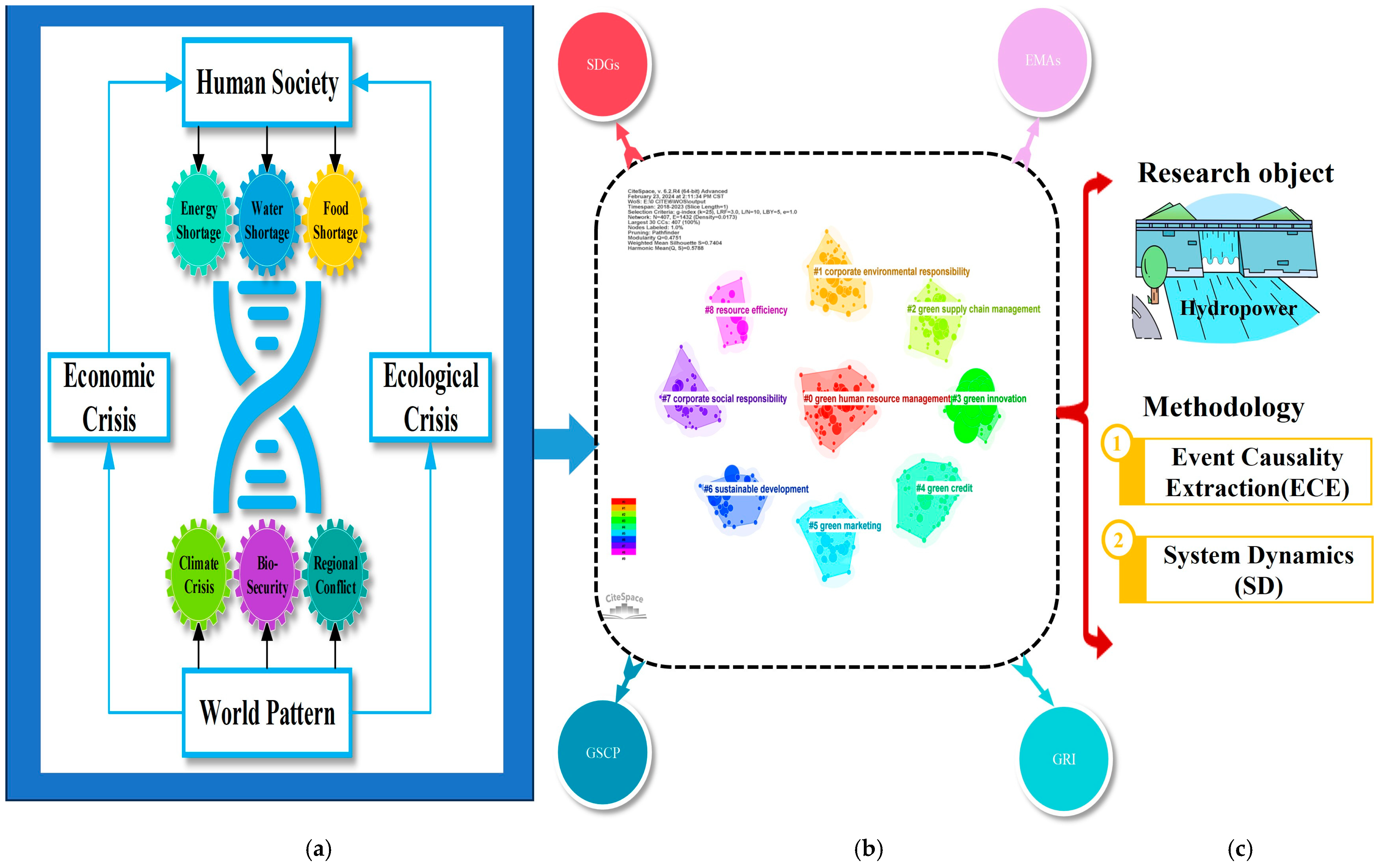
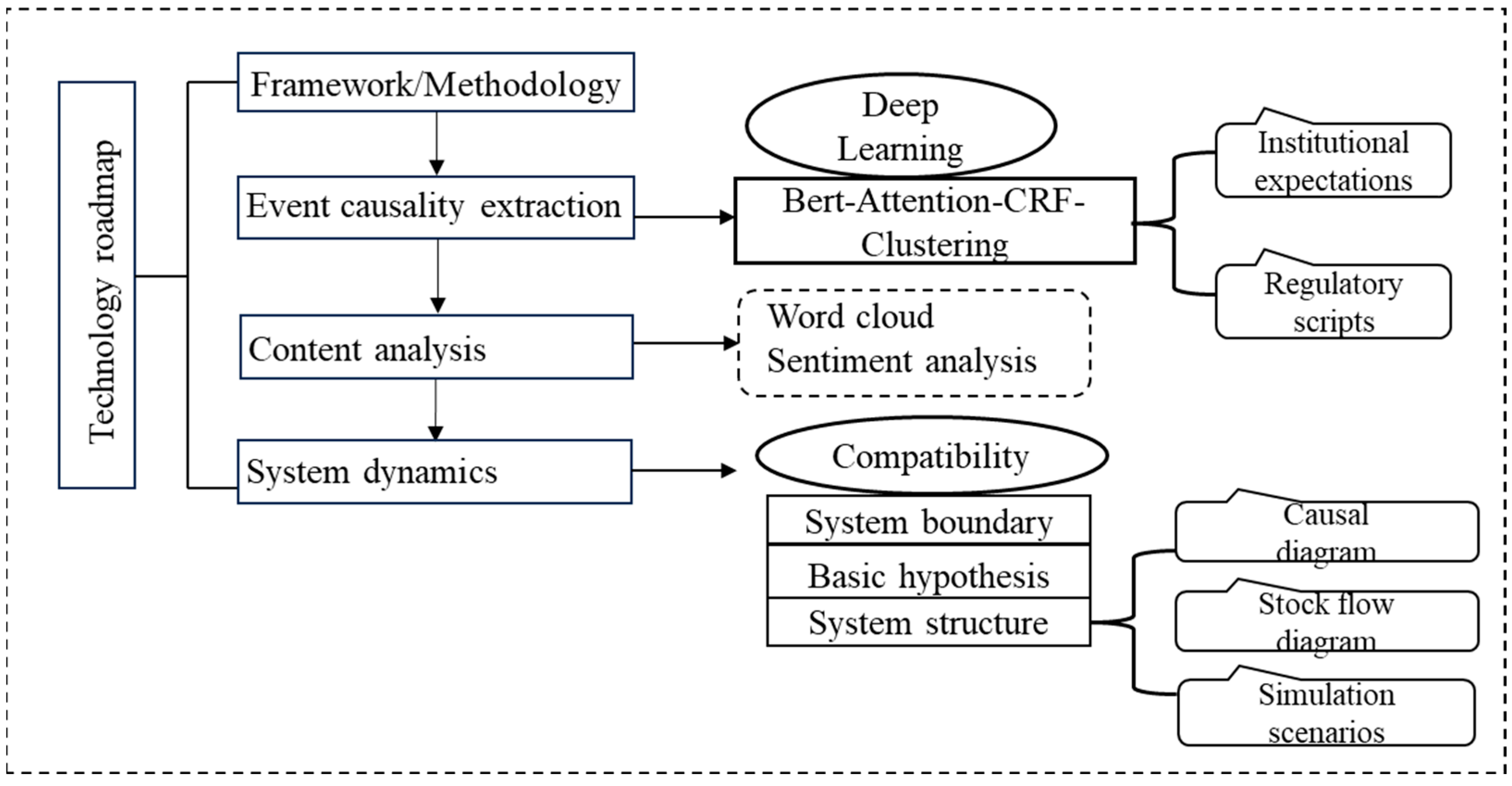
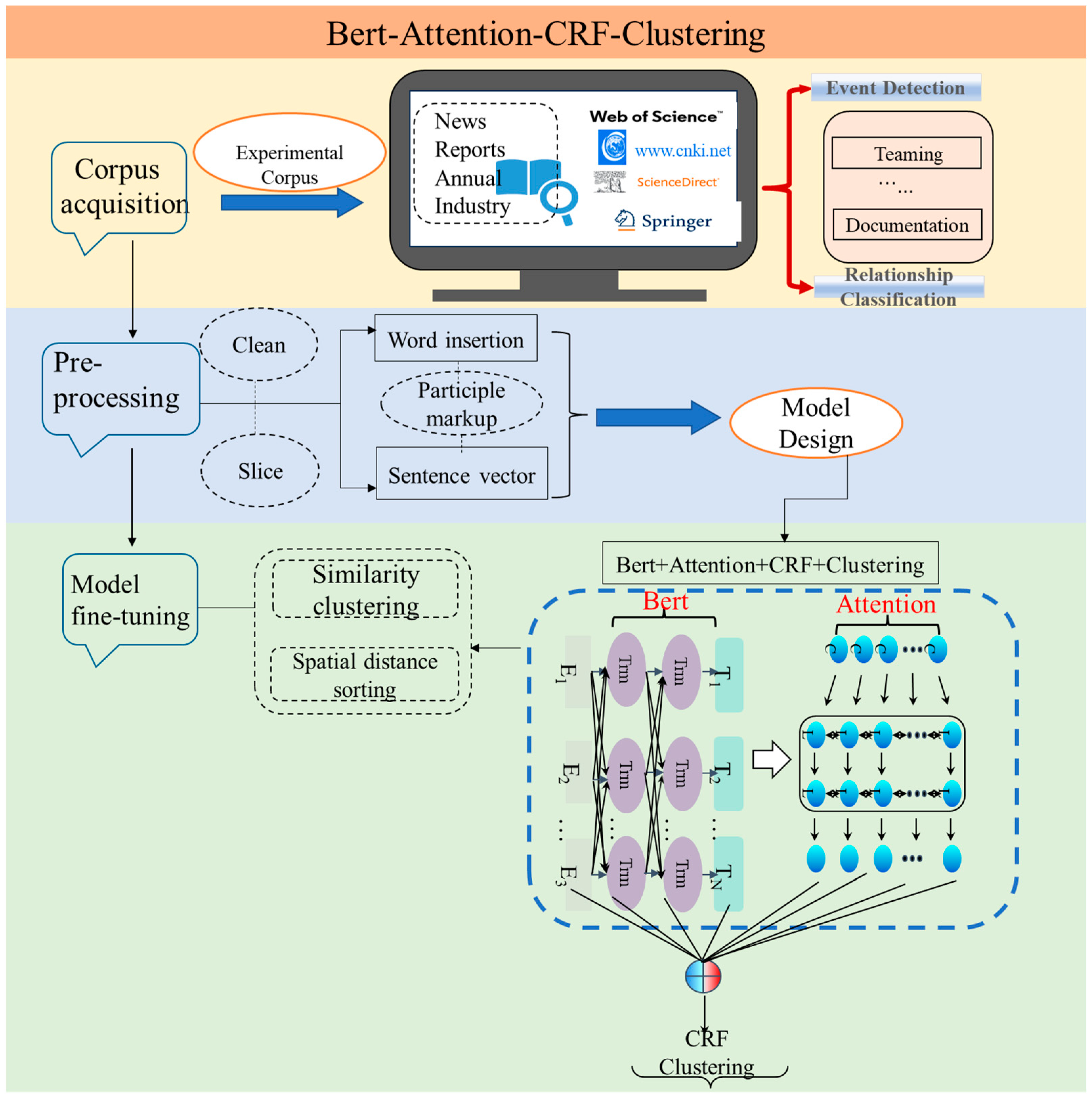
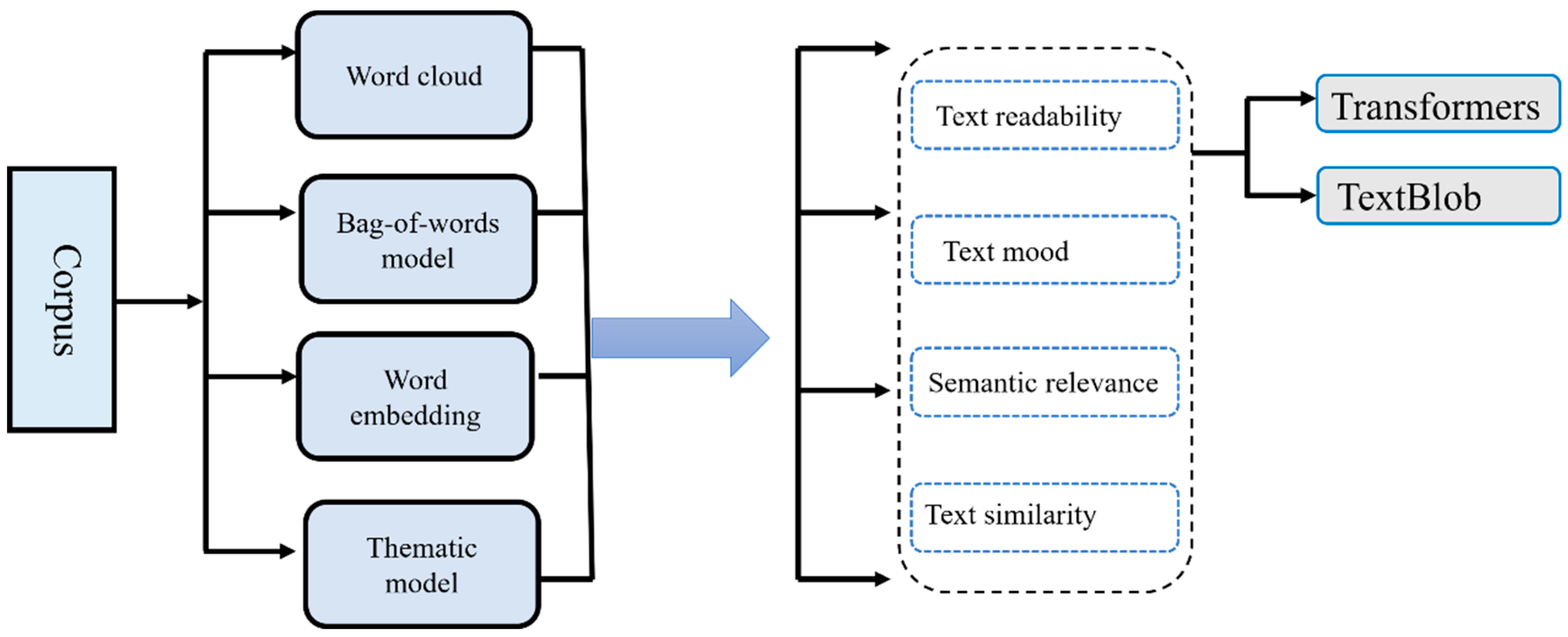
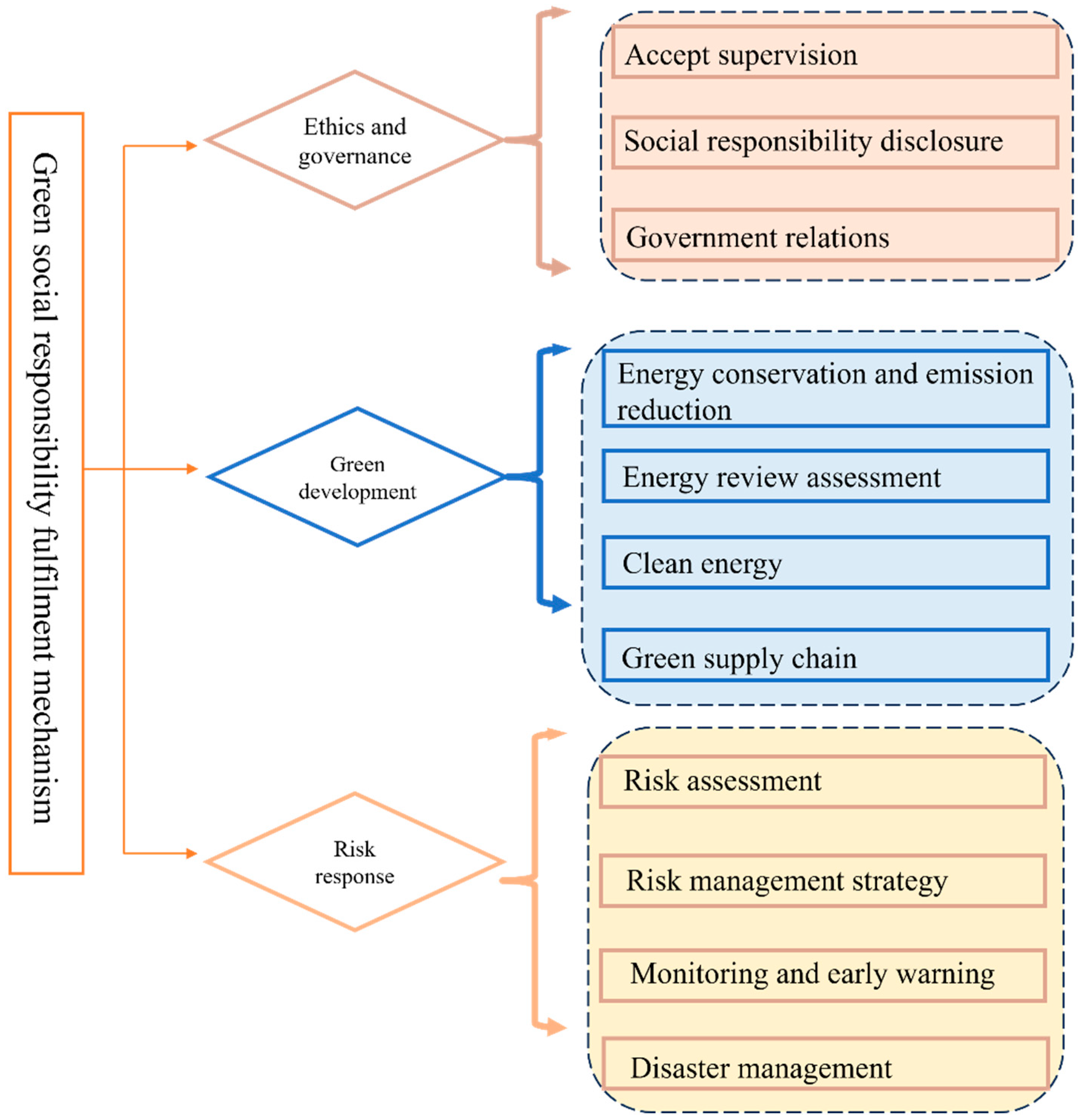
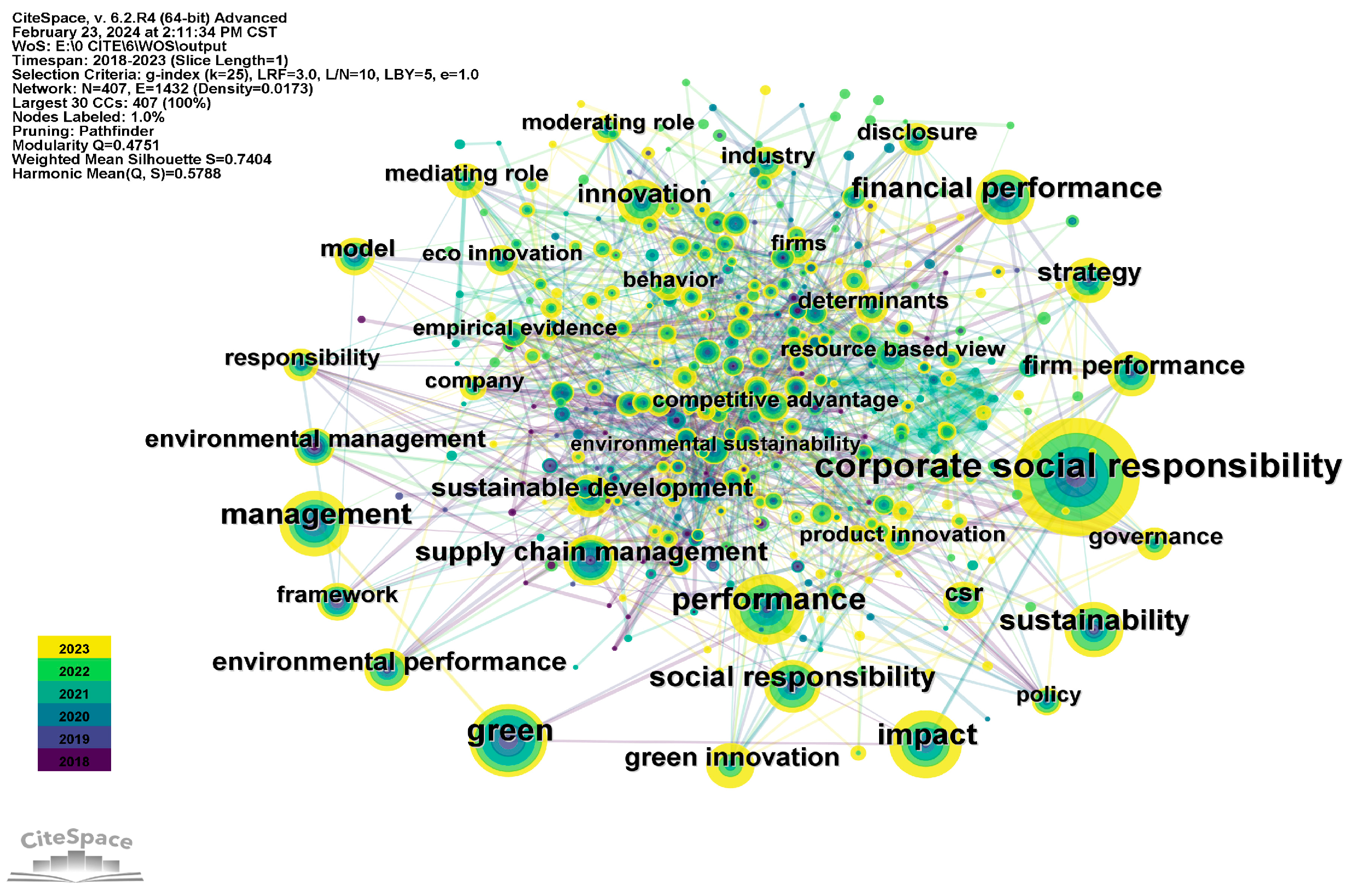

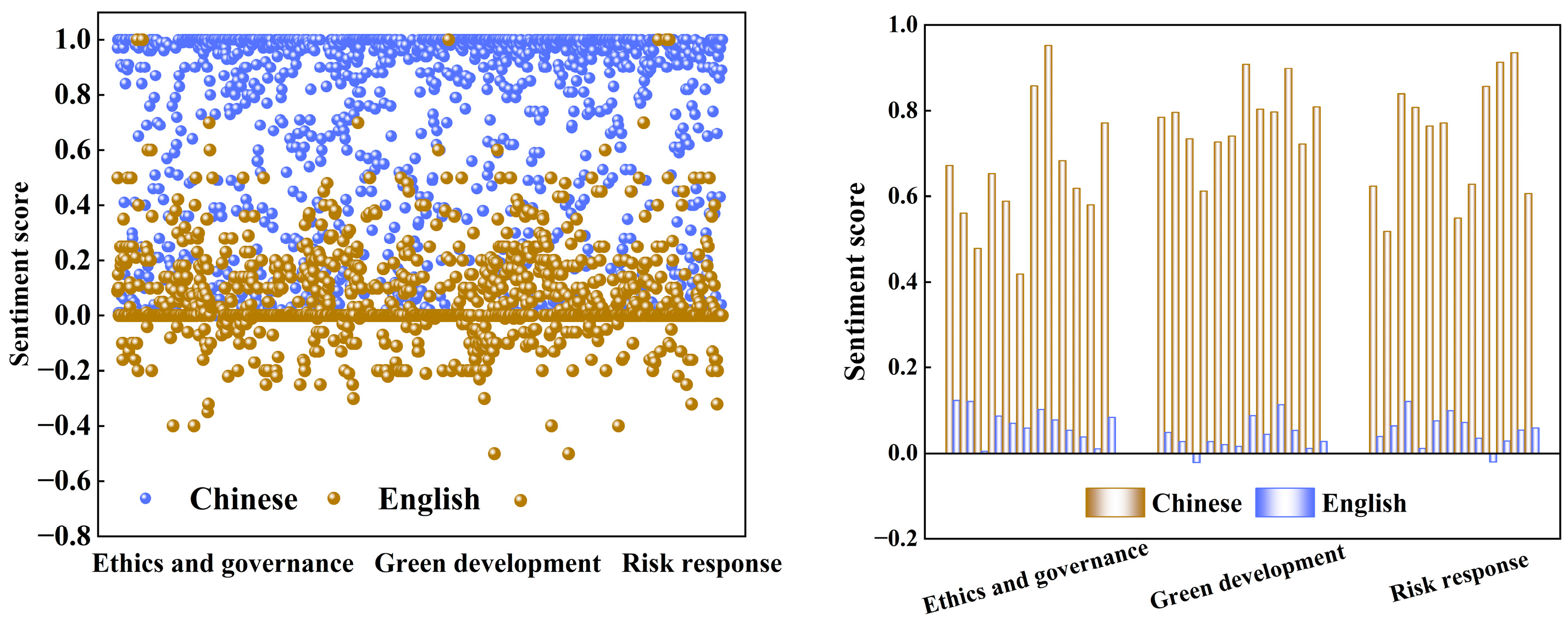
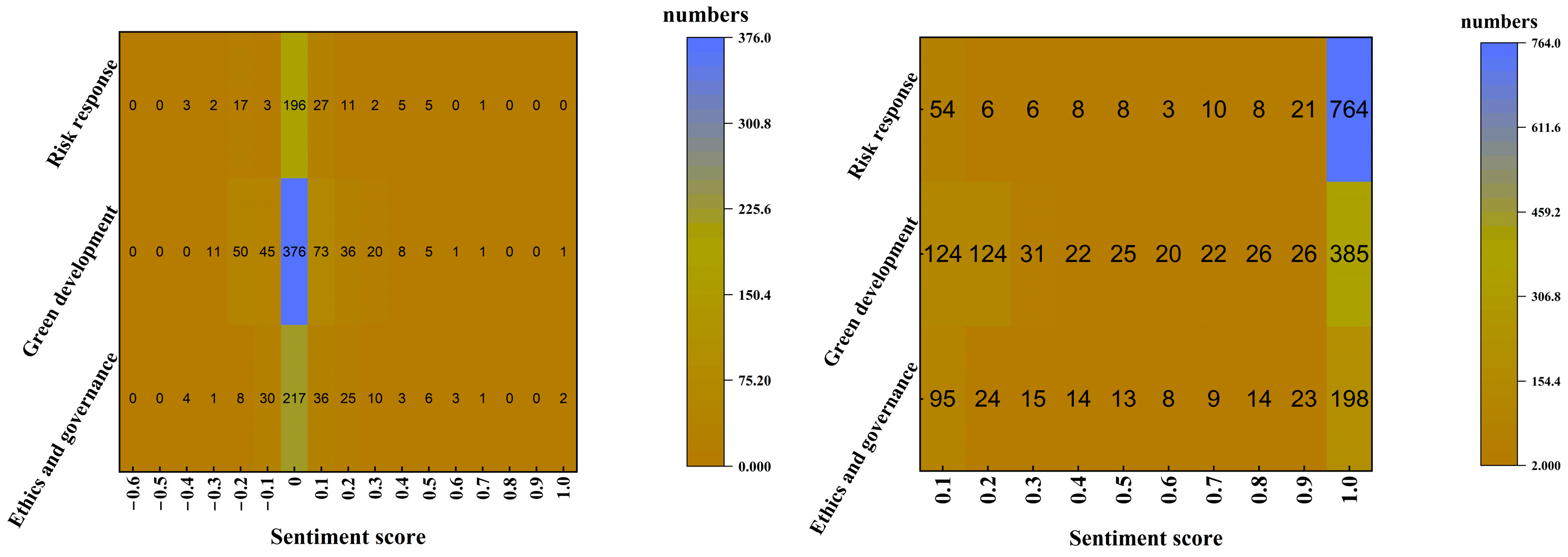

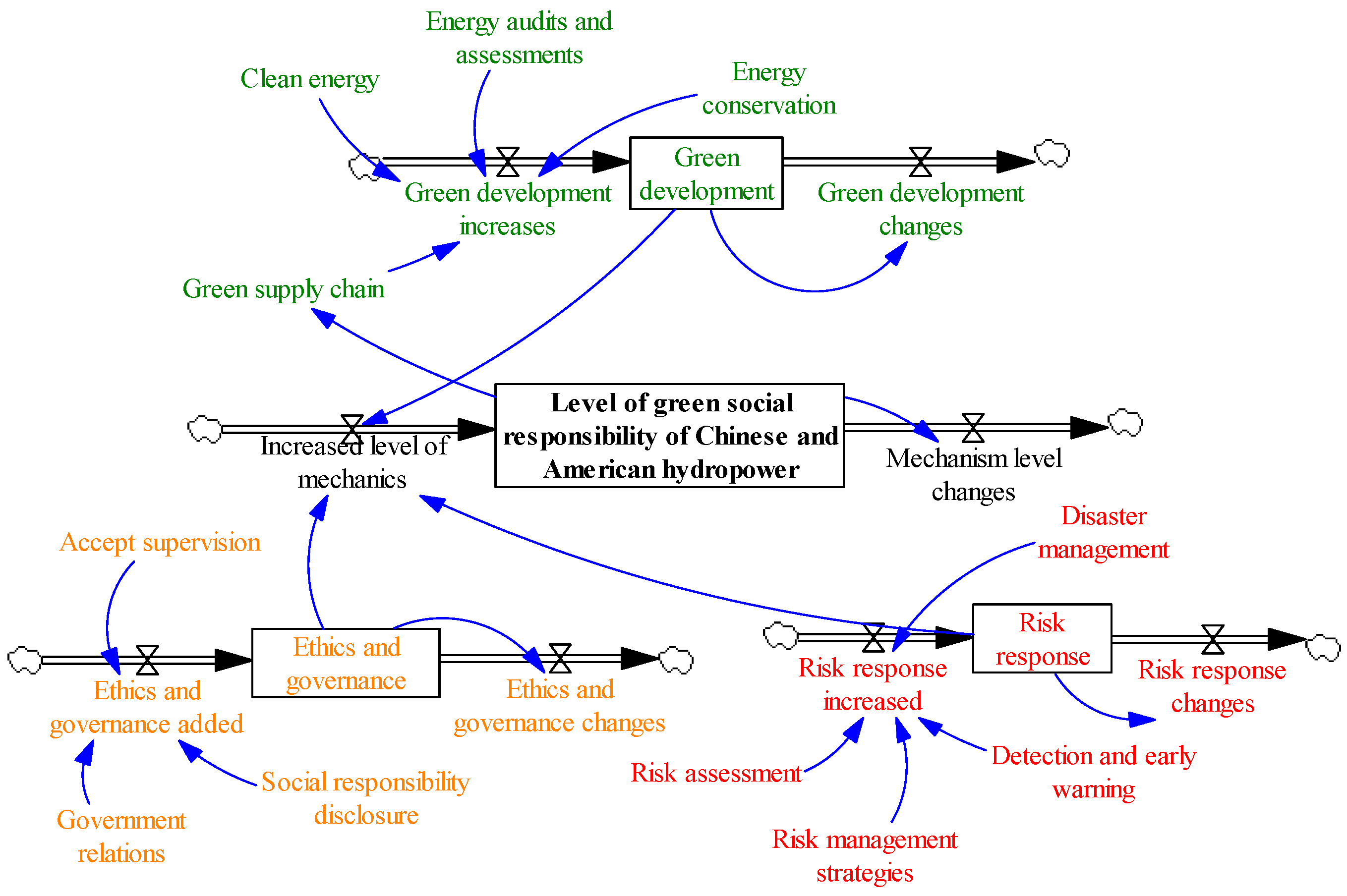
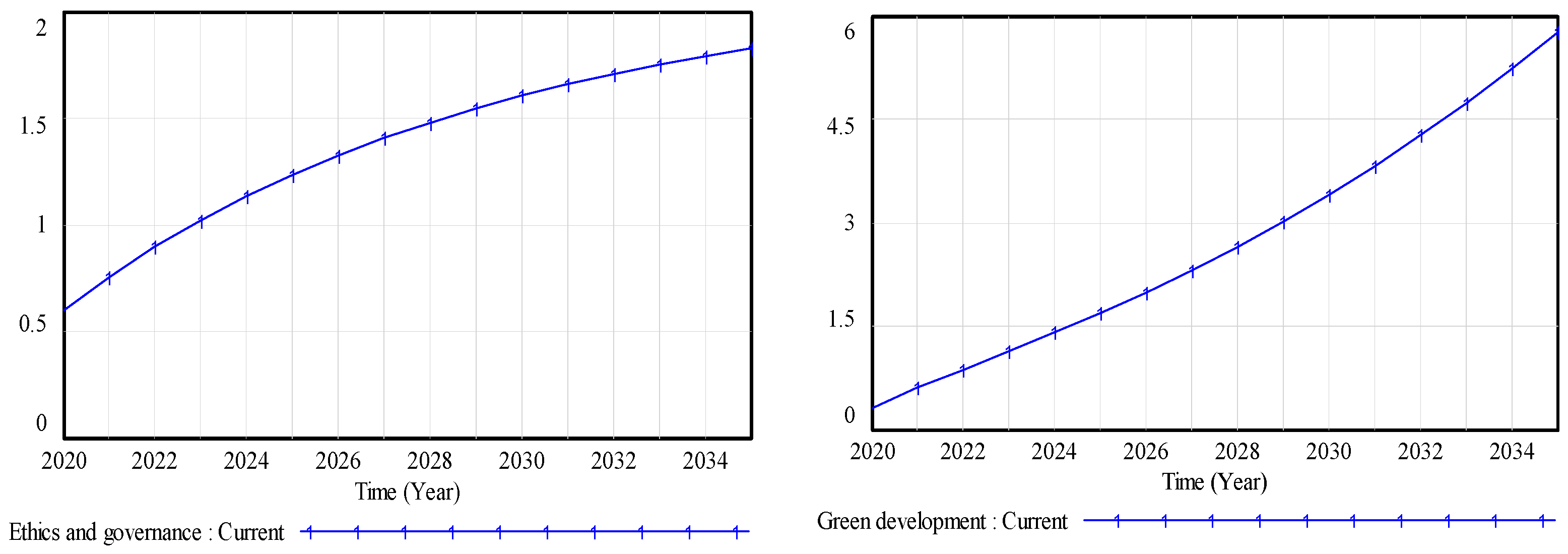
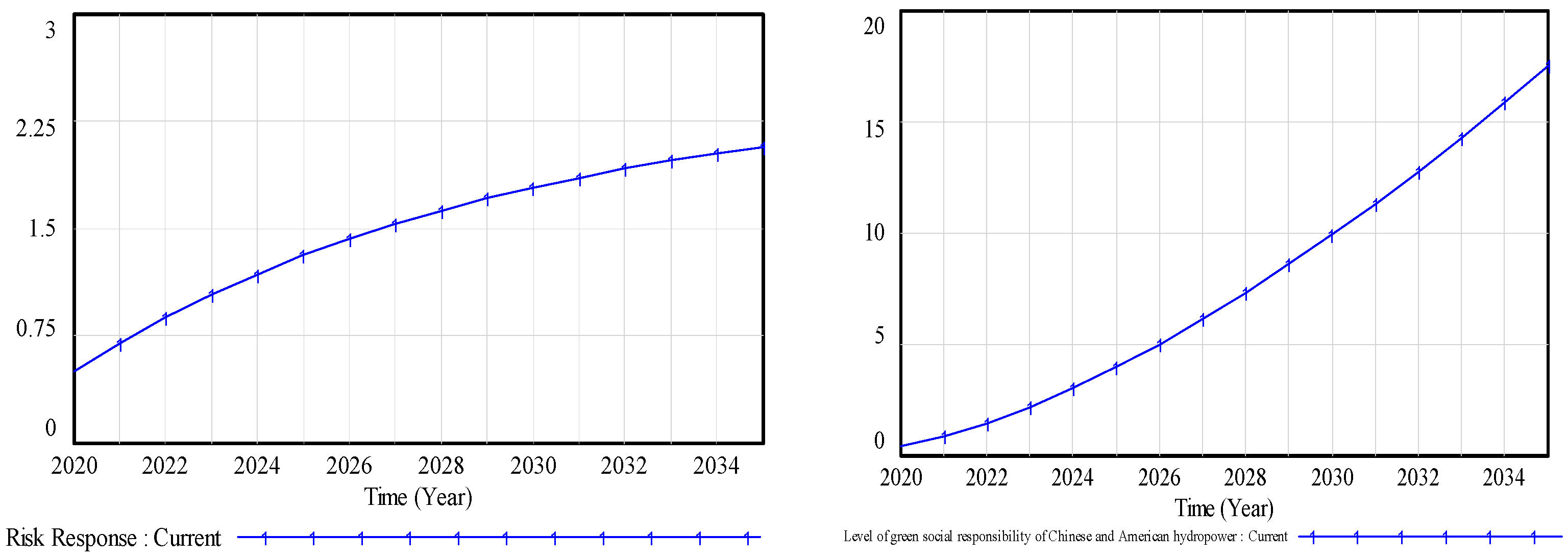

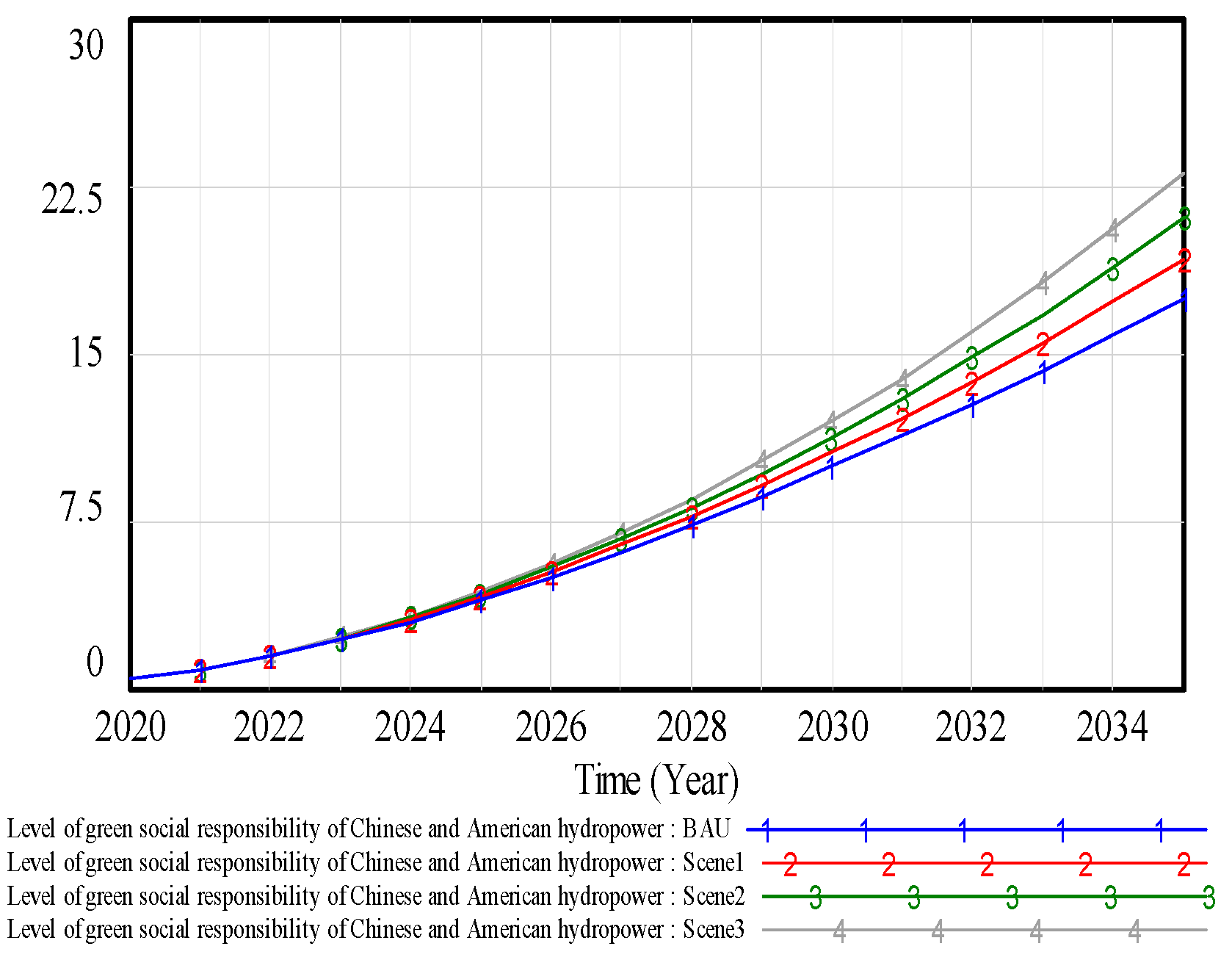
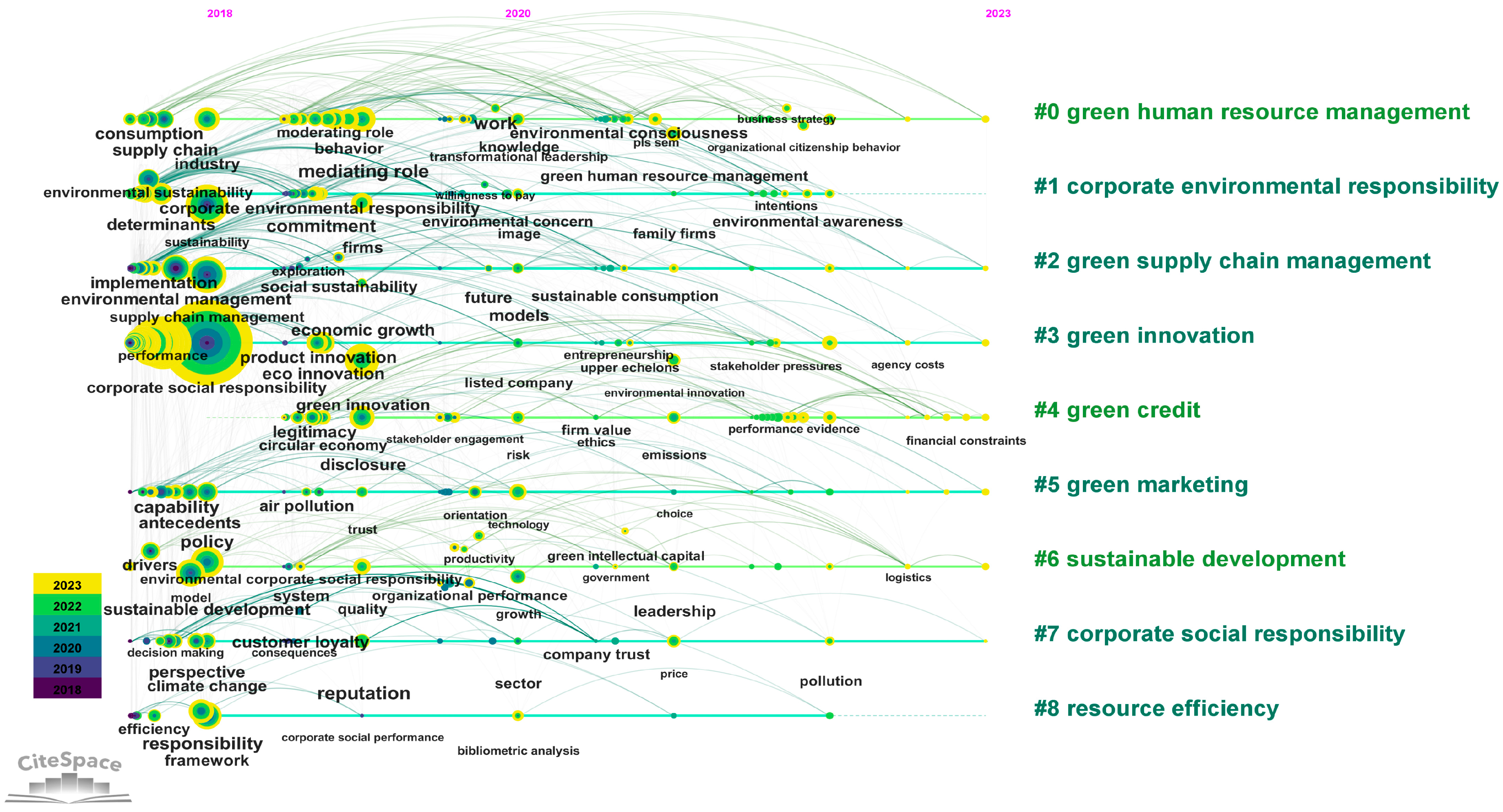
| Type | Methods | Model | Characteristics |
|---|---|---|---|
| Rule-based | Manually or dictionaries | Proteus | Highly accurate patterns Personalized customization |
| LaSIE-II | |||
| NetOwl | |||
| FACILE | |||
| Machine learning-based | Classification modeling | SVM | Small sample learning methods Avoid curse of dimensionality Good “robustness” |
| DBN | |||
| Sequential modeling | HMM | ||
| HEMM | |||
| Deep learning-based | CNN + CRF | CNN-CRF | Excellent matching ability Strong robustness and fault-tolerance Possess the capacity for association Possess reasoning ability |
| IDCNN-CRF | |||
| RDCNN-CRF | |||
| LSTM + CRF | LSTM-CRF | ||
| BiLSTM-CRF | |||
| CNN + LSTM + CRF | BiLSTM-CNN-CRRF | ||
| Attention clustering | Bert-Attention-CRF-Clustering |
| Regulatory Scripts | China Institutional Expectations | United States Institutional Expectations |
|---|---|---|
| Ethics and governance | 1. Disclose the work of immigration relocation, quality, environment and occupational health; 2. Regularly disclose corporate social responsibility reports and willingly accept supervision; 3. Promote information sharing and government collaboration. | 1. Comply with license standards and accept public supervision; 2. Disclosure of social responsibility through all reports and documents; 3. Cooperate with the federal government to provide low-interest funds. |
| Green development | 4. Carry out green partner certification, build a green supply chain; 5. Establish green development assessment and renovation plans; 6. Optimize scheduling for green low-carbon energy 7. Strengthen the construction of new energy storage and create a clean energy base. | 4. Enhance the level of renewable energy dispatch and promote the construction of wetland projects; 5. Introduce renewable energy, energy storage, and carbon capture technologies into power grid; 6. Conduct green energy audits on past dam rupture incidents; 7. Improve green infrastructure planning and clean energy financing. |
| Risk response | 8. Conduct security risk assessment and establish a risk event response mechanism; 9. Promote risk control measures and methods; 10. Establish an intelligent risk supervision system. | 8. Conduct a system risk assessment and carry out emergency management work; 9. Develop a comprehensive and long-term risk management plan; 10. Establish monitoring and early warning mechanisms. |
Disclaimer/Publisher’s Note: The statements, opinions and data contained in all publications are solely those of the individual author(s) and contributor(s) and not of MDPI and/or the editor(s). MDPI and/or the editor(s) disclaim responsibility for any injury to people or property resulting from any ideas, methods, instructions or products referred to in the content. |
© 2025 by the authors. Licensee MDPI, Basel, Switzerland. This article is an open access article distributed under the terms and conditions of the Creative Commons Attribution (CC BY) license (https://creativecommons.org/licenses/by/4.0/).
Share and Cite
Shu, H.; Zhu, Y. The Exploration of a Causal Mechanism for Corporate Environmental Performance in Hydropower Engineering Enterprises: Evidence from China and the United States. Sustainability 2025, 17, 3391. https://doi.org/10.3390/su17083391
Shu H, Zhu Y. The Exploration of a Causal Mechanism for Corporate Environmental Performance in Hydropower Engineering Enterprises: Evidence from China and the United States. Sustainability. 2025; 17(8):3391. https://doi.org/10.3390/su17083391
Chicago/Turabian StyleShu, Huan, and Yanye Zhu. 2025. "The Exploration of a Causal Mechanism for Corporate Environmental Performance in Hydropower Engineering Enterprises: Evidence from China and the United States" Sustainability 17, no. 8: 3391. https://doi.org/10.3390/su17083391
APA StyleShu, H., & Zhu, Y. (2025). The Exploration of a Causal Mechanism for Corporate Environmental Performance in Hydropower Engineering Enterprises: Evidence from China and the United States. Sustainability, 17(8), 3391. https://doi.org/10.3390/su17083391





